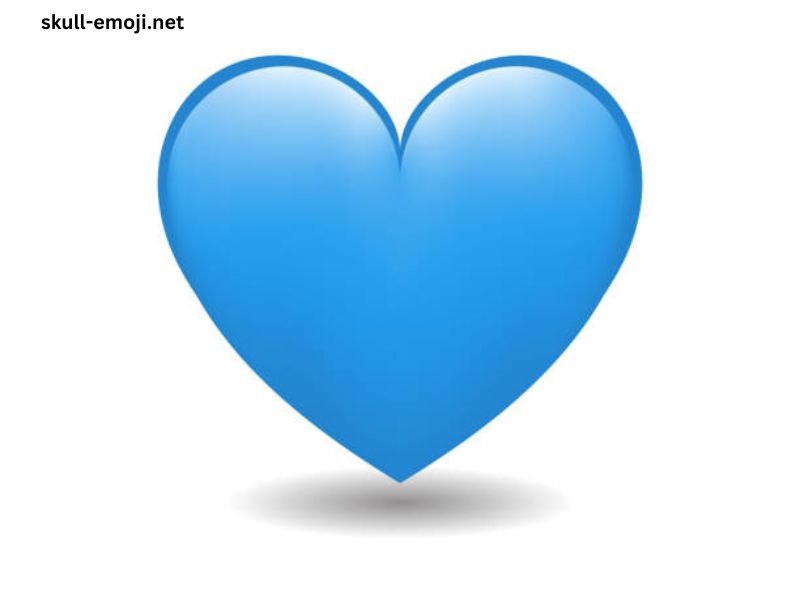The rise of digital communication has transformed the way we express our emotions and intentions. Among the various symbols that have emerged, emojis play a pivotal role. One emoji that has garnered attention is the blue heart (💙). While many may assume that a heart emoji is simply a romantic gesture, the blue heart holds a more nuanced significance, especially in the context of female communication. This article will delve into the meaning of the blue heart, its implications in relationships, and how it reflects broader social dynamics.
The Color Blue: Symbolism and Associations
Before diving into the specifics of the blue heart emoji, it’s essential to understand the symbolism of the color blue itself. Blue is often associated with tranquility, trust, and loyalty. It evokes feelings of calmness and stability, which can contrast with the more passionate or fiery emotions represented by red hearts. For women, using the blue heart emoji can convey a range of emotions, from friendship to deep affection, and even sadness or longing.
Emotional Connections and Friendship
One of the most common uses of the blue heart emoji among women is to signify platonic love and deep friendship. In a world where relationships can be complex, the blue heart represents a safe space, a connection that is built on trust and mutual respect.
When a girl sends a blue heart to a friend, it often communicates:
- Support: The blue heart can be a way to express solidarity during tough times, showing that she is there for her friend emotionally.
- Understanding: It signifies a level of emotional intelligence, indicating that she values the bond and understands the complexities of friendship.
- Trust: The blue heart embodies a promise of loyalty and reliability, suggesting that the friendship is meaningful and strong.
Romantic Implications
While the blue heart is often associated with friendship, it can also appear in romantic contexts, albeit with a different connotation than the traditional red heart. When a girl uses the blue heart in a romantic setting, it may convey:
- Deep Affection: The blue heart can indicate a profound emotional connection that transcends mere physical attraction. It suggests a bond that is rooted in understanding and emotional intimacy.
- Sincere Love: In contrast to the passionate fervor of the red heart, the blue heart embodies a calmer, more stable form of love, often reflecting a mature relationship.
- Compassion: It may signify a compassionate love, one that prioritizes emotional well-being and mutual respect over mere romantic gestures.
Expressions of Sadness or Longing
Another dimension of the blue heart is its association with sadness or longing. When a girl sends a blue heart in a context of distress or melancholy, it can represent:
- Empathy: The blue heart can signal an understanding of pain or loss, offering a way to connect emotionally during difficult times.
- Nostalgia: It may also express feelings of longing for someone or something that has been lost, suggesting a wistful remembrance rather than despair.
- Subtle Communication: The blue heart can serve as a softer approach to discussing difficult emotions, allowing for a gentler exchange that avoids overwhelming the recipient.
Cultural Context and Social Dynamics
The interpretation of the blue heart emoji can vary based on cultural and social contexts. In some cultures, blue is a color associated with calmness and tranquility, while in others, it may symbolize sadness or introspection. This variability can influence how the blue heart is perceived when sent by a girl.
Social Media and Online Relationships
In the era of social media, emojis, including the blue heart, have become a shorthand for expressing complex emotions. Girls, in particular, often navigate a range of online relationships—from friendships to romantic entanglements—where the blue heart can play a crucial role.
- Subtle Messaging: The blue heart allows for nuanced communication, providing a way to express feelings that might be difficult to articulate verbally. It serves as a bridge between direct conversation and the emotional undertones that often characterize relationships.
- Visual Identity: In an online space where visual cues can carry significant weight, using a blue heart can help establish a girl’s identity and how she wishes to be perceived in her relationships.
Gender Dynamics
The use of the blue heart emoji also reflects broader gender dynamics in communication. Women are often socialized to prioritize emotional expression and connection. In this context, the blue heart can serve as a tool for:
- Encouraging Vulnerability: By using the blue heart, girls can foster an environment where vulnerability is accepted and encouraged, promoting deeper emotional connections.
- Establishing Boundaries: The blue heart can communicate affection without crossing boundaries, allowing for a clear distinction between different types of relationships.
The Impact of the Blue Heart in Modern Communication
As digital communication continues to evolve, the blue heart emoji has emerged as a powerful symbol in female communication. Its ability to convey various emotions—friendship, romantic affection, empathy, and sadness—makes it a versatile tool in navigating complex social landscapes.
Emotional Intelligence
The use of the blue heart reflects a high degree of emotional intelligence, showcasing an understanding of not just one’s own feelings, but also those of others. For girls, this can lead to:
- Stronger Relationships: By using the blue heart to communicate effectively, girls can strengthen their relationships through empathy and support.
- Healthy Boundaries: It enables clear communication about emotional availability, ensuring that relationships are respectful and fulfilling.
The Future of Emoji Communication
As technology continues to evolve, so too will the meanings and uses of emojis like the blue heart. Future generations will likely develop their own interpretations, adding layers to its significance. The blue heart may evolve further, reflecting changes in cultural attitudes towards friendship, love, and emotional expression.
Conclusion
The blue heart emoji holds a rich tapestry of meanings, particularly in the context of female communication. It represents friendship, loyalty, and a deep emotional connection, while also encompassing feelings of sadness and longing. Understanding the nuances of the blue heart can enhance our appreciation of how digital symbols facilitate complex emotional expressions in our increasingly interconnected world.
As we continue to navigate the complexities of relationships—both online and offline—the blue heart will remain a significant tool for girls, enabling them to express their feelings in a way that is both subtle and profound. In a world where emotional nuances often get lost in translation, the blue heart offers a powerful means of communication, reflecting the depth and richness of human connection.



